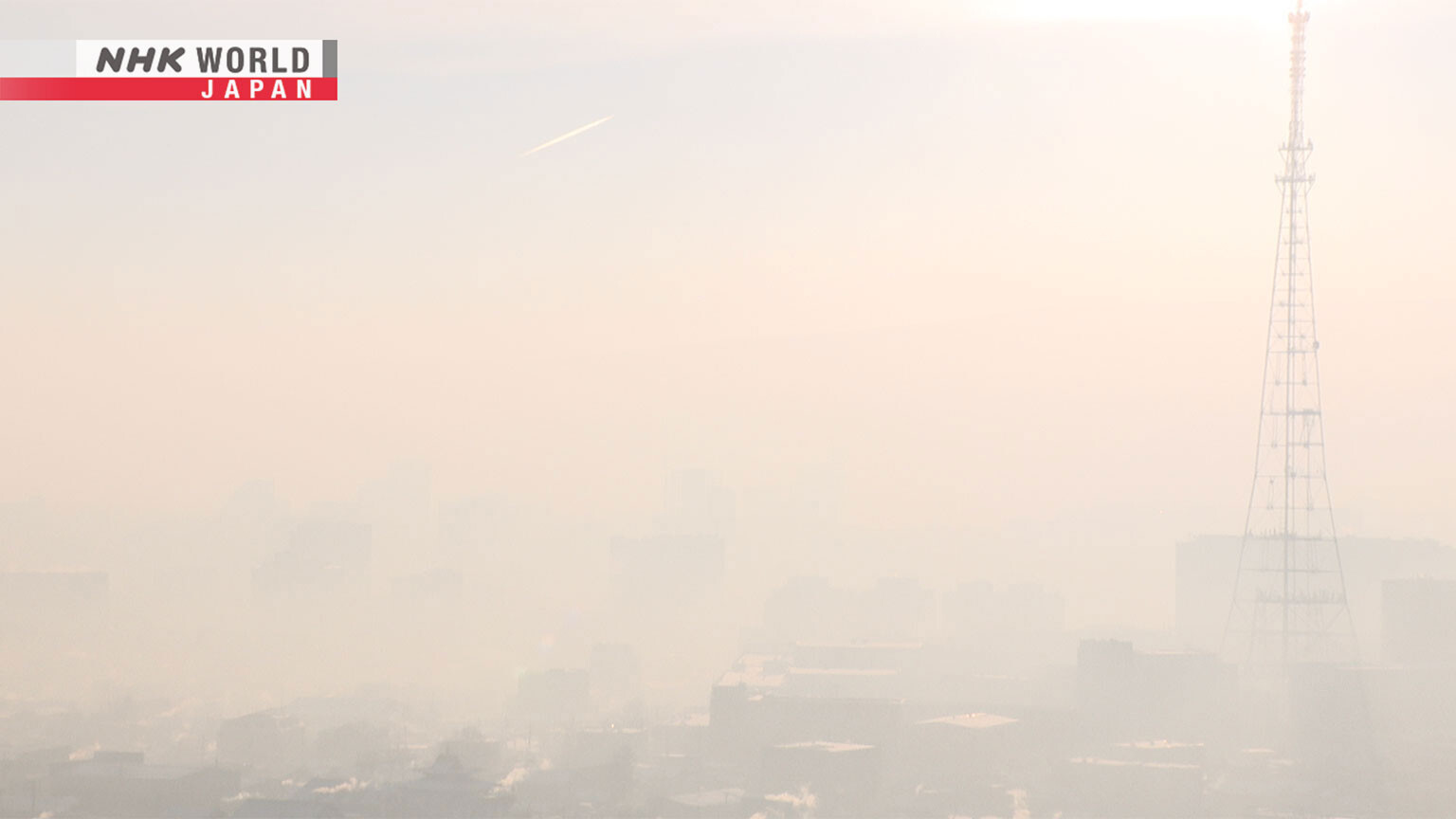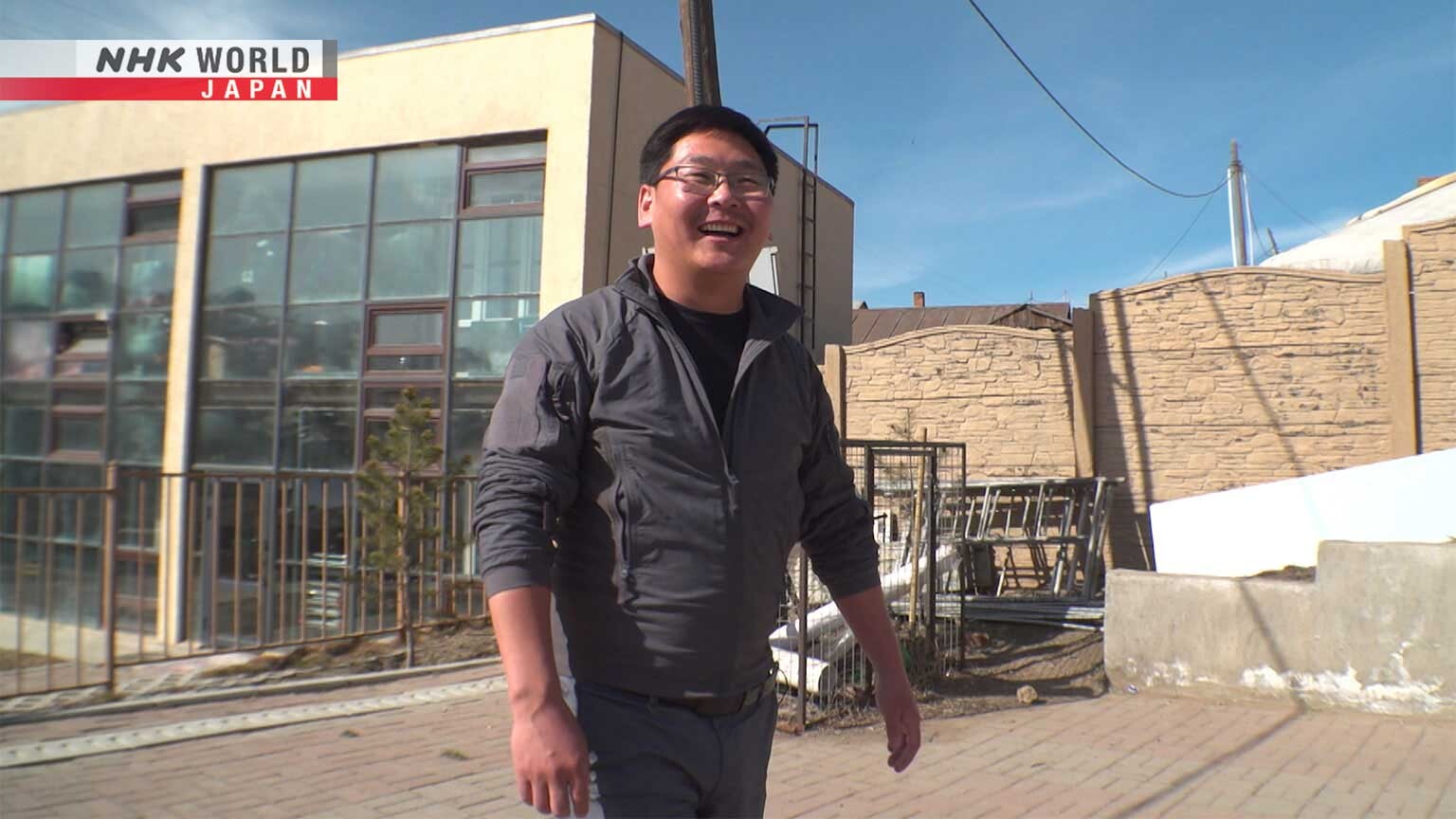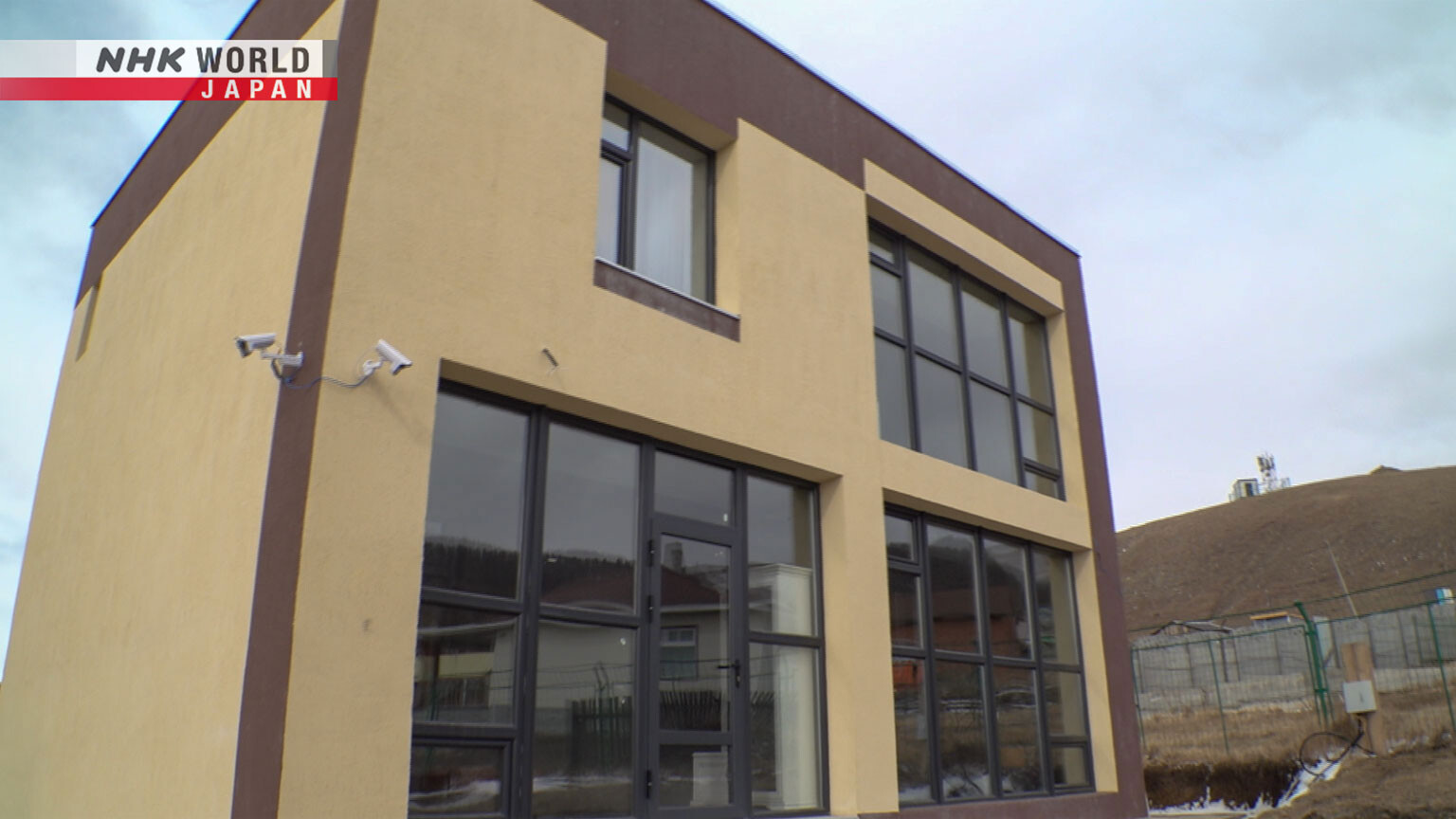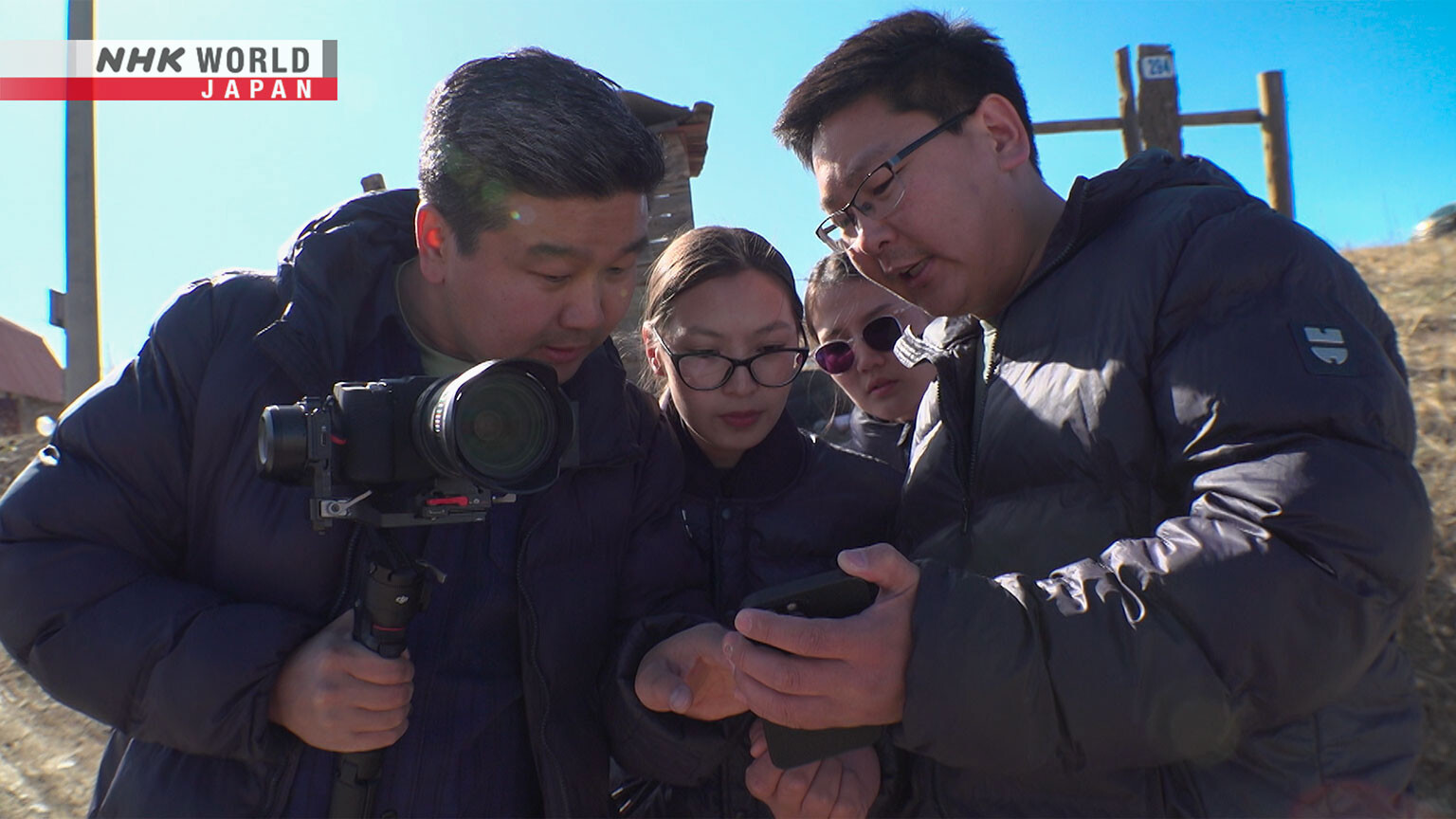From Smog to Sunshine: Mongolia
Mongolia's capital Ulaanbaatar suffers from severe air pollution. New designs use sunlight to ensure warm, smoke-free homes. We explore the technology and its challenges.




Transcript
Morning in Ulaanbaatar, the capital of Mongolia.
A thick haze of smoke covers the city throughout the winter, causing serious air pollution.
The biggest contributor is smoke rising from coal and wood-burning stoves, used in the impoverished ger districts.
With temperatures falling as low as minus 40 degrees Celsius, residents must keep their stoves burning.
In 2018, the city recorded a daily concentration of PM2.5, 133 times higher than that recommended by the WHO.
To tackle the serious pollution, the Mongolian government spent a considerable budget on developing refined coal briquettes.
It also outlawed ordinary coal.
However, the new fuel has led to a stream of carbon monoxide poisonings.
Over a hundred people died from this in 2023 alone.
There's less smoke but people don't really understand the situation.
They don't ventilate because they don't realize there's still pollution.
The spotlight has now fallen on a new kind of home, that produces no smoke, but stays warm throughout Mongolia's bitter winter.
The design is the work of architectural designer Bat-Erdene.
There is electricity but no heaters.
New technology makes efficient use of sunlight to ensure warmth throughout the winter.
It's hot!
Bat-Erdene has also founded an NGO with journalists, that works with other professionals hoping to tackle the pollution problem.
He provides ger district residents with technology and ideas for reducing smoke.
I work with people who want to change this country.
In 30 years, we'll see a clean Ulaanbaatar.
Meet the people fighting Ulaanbaatar's air pollution.
1.7 million people, around half of Mongolia's population, live in Ulaanbaatar.
The ger districts stretch out from the city's central skyscrapers.
Many nomads came to these districts after losing their herds to cold waves or heavy snow, living in mobile ger tents and simple houses.
An office building in the city.
It's the home of Bat-Erdene's company.
He founded it in 2017 to plan, build, and sell smoke-free homes.
Today it has a staff of 35.
This is a ger district to the north of the city.
Among the tents and simple one-story buildings, an almost shopping-mall-like structure stands out.
It's the site of the first smoke-free homes that Bat-Erdene built.
It's a two-story building with seven units.
The south side of each unit is entirely glass, from floor to ceiling.
This couple is interested in buying a smoke-free home.
Bat-Erdene shows them a currently occupied unit.
The residents have agreed to show what it's like to live here.
It's an apartment home of 60 square meters.
The living, dining, and kitchen areas are downstairs, with two bedrooms upstairs.
There is no heater in this room.
Amazing.
The secret behind this smokeless home lies beyond this door.
It's warm.
This is the sunroom.
It's hot!
This part gets hot.
The sun is shining here today so this part is hot.
The higher part isn't hot.
In winter, the sun shines directly on this area.
It becomes too hot to touch.
The sunroom on the south side of the building is heated by sunlight.
Warm air is sent to the rest of the unit.
This black wall plays a major role in ensuring the home stays warm throughout the winter.
It's made from a special clay, developed by the firm through extensive experimentation.
The details are a trade secret, but it's a mixture of earth and various minerals, which make it perfect for storing heat.
Fresh air from the outside is also thoroughly heated by the walls before entering the home.
Because the sun sits lower in the sky during the winter, the black wall receives a direct dose of sunlight.
On especially sunny days, the sunroom can get as hot as 90 degrees Celsius.
Even when there's no sun, the heat in the wall doesn't escape.
It keeps the average interior temperature at around 26 degrees.
The windows also incorporate triple-glazed glass to prevent heat from escaping.
A key part of the process happens before construction even begins.
To maximize heat from sunlight, it's vital to measure the exact angle of the sun for that specific plot.
In summer, meanwhile, the height of the sun means the black wall receives little direct light.
Residents can open the sunroom windows and stay comfortable.
Not only do residents not need to spend time and energy operating stoves or heaters, they also save on fuel costs.
They need only pay the electricity bill for the ventilation system.
You can buy a 2900-dollar, 3kW solar panel.
You'll never pay a penny for heat again.
We really like it.
Using the angle of sunlight.
It's such a smart approach to solving the problem.
It's cloudy and windy today.
But that wall was really hot.
Wanting to explore the pollution issue from different perspectives, Bat-Erdene started an NGO with environmental journalists in 2022.
It's called Shinchilgee, which means "Updating the City."
Now and then he invites university professors and construction firm owners, who share his goals, to take part in workshops.
Today, they're talking about a summer awareness event.
Bat-Erdene and his guests feel that many Ulaanbaatar residents forget all about the pollution during spring and summer,
when the stove smoke clears.
This removes any sense of urgency.
So they plan to chill a huge storage container, recreating a minus 30-degree Celsius environment.
Visitors will enter a ger tent inside the container, giving them a vivid reminder of the bitter cold and pollution of winter.
This box is a model of the container.
In spring, everyone forgets about the smoke.
We have to work on this all year round. Especially in the summer.
I want people to see that's how we get rid of the winter smoke.
So we'll have to reassemble it?
The ground will be frozen.
At -25°C it'll be completely solid. How do we work with that?
The NGO carries out regular interviews in ger districts.
It uses social media to report on current air pollution, and offers ideas on how to reduce smoke while staying warm.
This video shows simple ways to stay warm in a ger, without spending much money.
In the bitter cold of winter, heat escapes a ger, regardless of how much it's warmed.
But using insulation and covering gaps helps maintain the warmth for longer.
First, buy a 1.5m by 1.8m piece of felt for $12.
Cut it to the size of your door.
Screw it in place.
Make sure to stretch the felt properly before attaching it.
The first smoke-free homes were built on the land where Bat-Erdene once lived.
It was a small house on quite a steep slope.
We built it along with some relatives.
But it was so cold.
Most ger homes receive very little sunlight.
Living conditions are bad.
Very different from the city itself.
I wanted to start in the place I grew up.
And change Ulaanbaatar from here.
Bat-Erdene was born in a village in central Mongolia.
His parents divorced soon after, and he moved to a ger district in Ulaanbaatar with his mother.
She was an elementary school teacher, and raised four children on a limited income.
Our biggest cost was always heating.
Savings there means more money.
Better food to eat.
Nice clothes to wear.
After-school activities.
But all the money went to staying warm.
After graduating university, Bat-Erdene spent seven years in Russia, working for heater manufacturers and construction firms.
There, he hoped to learn about heating in cold countries.
In Russia, it's standard practice to keep the heating on in empty homes, to prevent building cracks in the winter.
Bat-Erdene thought this was a waste, and came up with a new idea.
My apartment faced south.
I turned my balcony into a sunroom, painting the walls black.
It stayed warm without heating.
This was the foundation for his smoke-free home design.
In 2017, Bat-Erdene returned to Mongolia and founded his company with the money he'd saved abroad.
But the development turned into a series of failures.
He couldn't find the optimal angle for sunlight.
Walls would freeze, or grow large amounts of mold.
He soon ran out of money.
Bat-Erdene was saved by his sister, who is three years younger.
Urantsetseg is a legend in the Mongolian judo world.
She won gold in the 2013 World Championships, and bronze at the Tokyo Olympics in 2021.
Fall like this.
Can you get free? Watch your legs.
I'm getting your legs.
She'll die!
You can't let up!
We did Mongolian wrestling as kids, boys and girls together.
Bat-Erdene taught me various moves.
I wanted to show the world what he taught me.
I won several competitions with the moves I'd learned.
Urantsetseg had no reservations about offering her brother her competition winnings.
It's strange, but knowing she's on my side fills me with courage.
I feel that I can do anything.
She's always with me in spirit. She gives me courage.
I can tackle any challenge.
His sister's support helped Bat-Erdene complete the first housing complex in 2022, five years after founding his company.
He submitted it to a contest run by the German government for highly energy-efficient homes.
It won, and he received subsidies to cover part of the construction cost.
But it wasn't all smooth sailing.
People said it was impossible.
They thought I was lying.
People posted on social media that I was making it up.
Bat-Erdene wanted people to learn about his project.
He decided to use social media to stream a live explanation of his smoke-free homes.
This model room is 100m2. Let's go inside and take a look.
Inside there is a sunroom.
It sends warm air to the rest of the house.
Let's check the temperature of the wall. 54°C.
Air pollution is a major problem for everyone living in Ulaanbaatar.
It was a simple live-stream, but it was the first step on the road to wider acceptance.
Undarmaa has lived in the smoke-free complex for two years.
Her family of six includes two grandchildren.
As the first family to buy a smoke-free home, they're also the first to experience life in one.
Bat-Erdene asked for their help in reporting little things they notice every day.
It's a 15-year loan, with monthly $100 repayments.
It used to cost more than that to buy coal and wood.
No more lighting fires early in the morning, or coal dirtying the home.
No splitting logs outside either. My life is much easier. I love it.
Bat-Erdene continues to improve the quality of his smoke-free homes, adjusting building structure and construction materials.
Today he's visiting the only factory in Mongolia that makes insulation out of sheep's wool.
Most sheep in Mongolia are raised for eating.
Their wool is stiff and hard to process, so it's usually discarded rather than sold.
However, factory owner Bat-Ild learned that sheep's wool is excellent at retaining heat and humidity.
He began collecting wool from nomads to process into insulation.
Compared to standard insulation, which uses glass wool, his product helps prevent condensation inside the home.
As a natural product, it's also a greener choice.
The two men met in 2022.
Bat-Ild was excited by the idea of smoke-free homes, and provides his insulation at a discount.
It was fate that brought us together.
Our hour-long meeting turned into an all-night conversation.
His ideas inspired me.
I knew I had to help.
Today, the government is driving a regeneration program in Ulaanbaatar.
But most of the ger districts around the city are not part of the plan.
They remain all but ignored.
Bat-Erdene says these districts face many problems in addition to air pollution.
Something has to be done.
There is no basic infrastructure provided for residents here.
People simply dig their own pit toilets.
This is a toilet.
It's hilly, so when it rains, water pours into these pits.
It washes feces out onto the ground, and children play here.
They eat without washing their hands and get hepatitis A.
The ger districts keep expanding, as more people arrive from the countryside.
The provision of water and sewage systems has fallen far behind, and the government hasn't allocated a budget for the work.
Sewage is treated here.
In an effort to further popularize smoke-free homes in ger districts,
Bat-Erdene has begun adding small septic tanks into his house designs.
Enzymes and microorganisms break down the dirty water.
We water plants with this. It goes back to the environment.
Digging a well on the property also provides safe drinking water.
However, the septic tank alone costs around 8,400 dollars, making the smoke-free homes more expensive.
At the moment, a standard 60-square-meter detached home costs around 58,000 dollars.
The average annual income in Mongolia is just 4,500 dollars.
Since ger-district residents earn far less than average, this is well out of their reach.
To ensure as many people as possible can buy a smoke-free home, Bat-Erdene talked to a major bank.
After some negotiating, the bank agreed to a special, low-interest loan.
They're betting on Bat-Erdene's eco-friendly, smoke-free homes, and lowering their interest rate from 20 to 12%.
Ger-district residents need homes with green heat and sewage solutions.
With a government aid system, I could make the homes cheaper.
Work has started on new smoke-free homes.
A public housing organization called NOSK has requested eight units.
Bat-Erdene's smoke-free homes were highly rated by NOSK's research.
Elderly and disabled ger-district residents and their families will live in the units for a low rent.
The sun's light and energy should fall on all people, equally.
Even in ger districts, we should get good light, good schools, good services.
Why should where we're born make a difference?
I want to build a fairer society through construction.
I'm making that dream a reality.
The fight continues to solve Ulaanbaatar's air pollution problems and provide a healthy life, under bright, sunny skies.